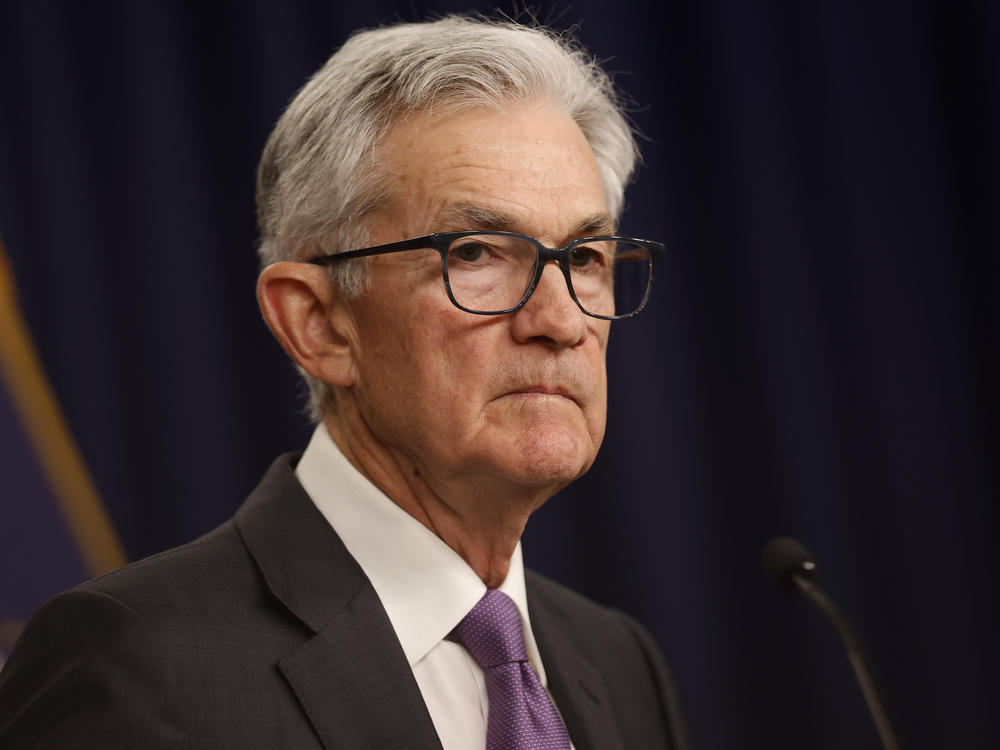Section Branding
Header Content
Federal Reserve holds interest rates steady, projects three rate cuts later this year
Primary Content
The Federal Reserve held interest rates steady on Wednesday, but policymakers signaled they still expect to start cutting rates later this year.
Updated forecasts from members of the Fed's rate-setting committee show an average of three quarter-point rate cuts in 2024 — similar to what policymakers were projecting in December.
Investors welcomed that news. All of the major stock indexes climbed to record highs, with the Dow Jones Industrial Average jumping 401 points or 1%.
Fed policymakers said their basic outlook hasn't changed, even though inflation was slightly hotter than expected in January and February.
"I don't think we really know if this is a bump on the road or something more," Fed chairman Jerome Powell told reporters. "We'll have to find out. In the meantime, the economy is strong. The labor market is strong. Inflation has come way down. And that gives us the ability to approach this question carefully."
Markets see a slim chance of a rate cut at the next Fed meeting in May, with a higher probability in June.
Since last summer, the Fed has kept interest rates at their highest level in more than two decades, in an effort to tamp down demand and bring prices under control.
Committee members voted unanimously Wednesday to keep their benchmark rate between 5.25 and 5.5%. "The Committee does not expect it will be appropriate to reduce the target range until it has gained greater confidence that inflation is moving sustainably toward 2 percent," the Fed said in a statement.
So far, the economy has weathered high interest rates in relatively good shape. The unemployment rate has remained below 4% for more than two years. Employers have added an average of 265,000 jobs in each of the last three months.
Higher interest rates have taken a toll on the housing market, however. Sales of existing homes fell 19% last year, dropping to their lowest level since 1995. The average interest rate on a 30-year mortgage was 6.74% last week, according to Freddie Mac — down from a peak near 8% last October.
Retail sales have also slowed in recent months in a sign that some consumers are struggling with the combination of high prices and high borrowing costs. Credit card debt topped $1.1 trillion last year, according to the Federal Reserve Bank of New York, and the number of card users who are behind on their payments now exceeds pre-pandemic levels.

